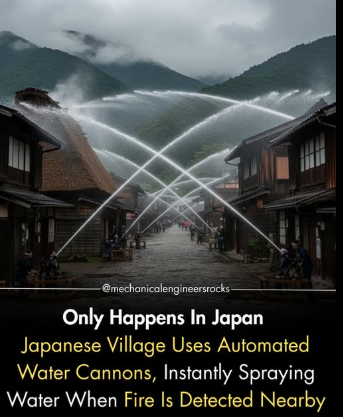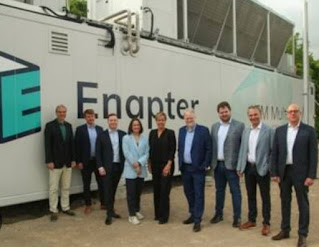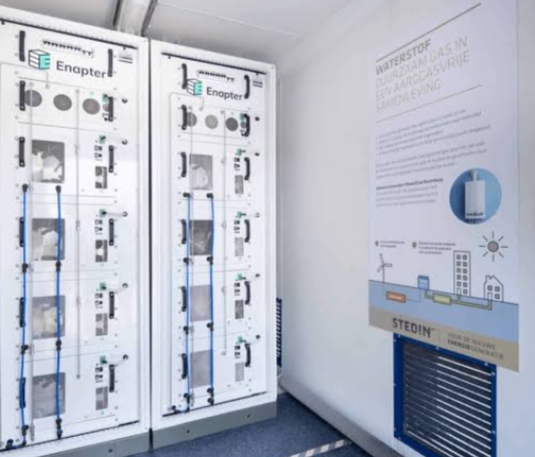Introduction Enapter Company Profiles Reviews
Enapter is a company that specializes in green hydrogen technology. They are known for developing innovative electrolyzer systems that produce hydrogen from renewable energy sources, such as wind and solar power.
Enapter’s mission is to accelerate the transition to a sustainable energy future by providing cost-effective and scalable solutions for hydrogen production. Their products are designed to support various applications, including energy storage, fuel cells, and decarbonization efforts across industries.
Enapter Company History
Enapter, founded in 2014, has a relatively short but impactful history in the field of green hydrogen technology.
Here’s a brief overview of their key milestones:
Foundation (2014)
Enapter was established in Pisa, Italy, by Sebastian-Justus Schmidt and Vaitea Cowan. The company’s vision was to make green hydrogen production more accessible and sustainable.
Prototyping and Research (2014-2017)
During its early years, Enapter focused on research and development, creating prototypes and conducting extensive R&D to refine their AEM (Anion Exchange Membrane) electrolysis technology.
Commercialization (2017-2018)
Enapter transitioned from the development phase to commercialization, making their AEM electrolyzers available to a wider market. These electrolyzers are compact, efficient, and capable of producing green hydrogen on-site.
Global Expansion (2018-Present)
Enapter expanded its operations and presence internationally. They established subsidiaries in Germany and Thailand, which allowed them to tap into a broader range of markets and collaborate with partners and customers worldwide.
Awards and Recognition
Over the years, Enapter has received recognition for its innovative green hydrogen solutions. They have won awards such as the Solar Impulse Efficient Solution Label, which highlights sustainable and efficient technologies.
Growing Product Portfolio
Enapter’s product portfolio has continued to expand, offering various electrolyzer models to cater to different needs, from small-scale residential units to larger industrial systems.
Contributing to the Hydrogen Economy
The company actively contributes to the development of the green hydrogen economy by enabling clean energy solutions, energy storage, and decarbonization efforts in industries like transportation, agriculture, and energy production.
Enapter’s history is marked by its commitment to advancing green hydrogen technology and playing a vital role in the transition to a more sustainable and eco-friendly energy landscape.
Enapter Company Profiles
Here is general description of what you might find in a company profile for Enapter:
Company Name: Enapter
Founded: 2014
Founders: Sebastian-Justus Schmidt and Vaitea Cowan
Headquarters: Pisa, Italy
Key People: You can list the current CEO, key executives, and notable team members.
Industry: Green Hydrogen Technology
Products/Services
Describe their main products and services, such as AEM electrolyzer systems for green hydrogen production.
Mission
Highlight the company’s mission and goals, which often involve advancing sustainable energy solutions and the hydrogen economy.
Partnerships and Collaborations
List significant partnerships with other companies, research institutions, or organizations.
Technological Innovation
Emphasize any unique technologies or innovations that set Enapter apart in the green hydrogen sector.
Sustainability Initiatives
Highlight any sustainability and environmental efforts the company is involved in.
Customer Base
Mention the industries and sectors that benefit from Enapter’s products and services.
Enapter Company: Manufacturer’s
Enapter is a green hydrogen technology company that specializes in the development and manufacturing of AEM (Anion Exchange Membrane) electrolyzer systems for hydrogen production.
Enapter is known for producing its own electrolyzer systems. They design and manufacture these systems in-house to ensure quality control and efficiency in green hydrogen production.
Product of Enapter Company
Enapter specializes in the production of AEM (Anion Exchange Membrane) electrolyzer systems for green hydrogen production. These electrolyzer systems are designed to be efficient, compact, and suitable for various applications.
Some of Enapter’s key products include:
1. EL 2.1: This is a small-scale AEM electrolyzer designed for residential and commercial use. It’s suitable for on-site hydrogen production to support energy storage, fuel cells, and decarbonization efforts.
2. EL 4.0: The EL 4.0 is a larger electrolyzer system, ideal for industrial and commercial applications. It can produce a higher volume of green hydrogen and is commonly used in sectors such as transportation and energy production.
3. EL 2.1 for Backup Power: This product is a version of the EL 2.1 designed for backup power solutions. It’s often used in conjunction with renewable energy sources to ensure a reliable power supply.
Enapter’s products are known for their modularity, scalability, and compatibility with renewable energy sources, making them valuable in the transition to a more sustainable energy future. For the most current information about their product offerings, you should visit Enapter’s official website or contact them directly.
Development of Enapter Company
Enapter has experienced significant development and growth since its founding in 2014.
Here’s an overview of the company’s development:
1. Founding and Early Years (2014-2017): Enapter was established in Pisa, Italy, by co-founders Sebastian-Justus Schmidt and Vaitea Cowan. The company’s early years were dedicated to research and development, focusing on perfecting their AEM (Anion Exchange Membrane) electrolyzer technology.
2. Commercialization (2017-2018): Enapter transitioned from the research phase to commercialization, making their AEM electrolyzers available to the market. These systems were designed to produce green hydrogen from renewable energy sources, such as solar and wind power.
3. Global Expansion (2018-Present): Enapter expanded its global presence by establishing subsidiaries in Germany and Thailand. This expansion allowed them to tap into broader markets and work with partners and customers worldwide.
4. Product Portfolio Growth: Enapter’s product portfolio has continued to evolve, offering various electrolyzer models to cater to different needs, from small-scale residential units to larger industrial systems. They have been at the forefront of developing innovative electrolyzer technology.
5. Awards and Recognition: The company has received recognition for its contributions to sustainable energy solutions, including the Solar Impulse Efficient Solution Label, which highlights eco-friendly and efficient technologies.
6. Hydrogen Economy Advancement: Enapter has actively contributed to the development of the green hydrogen economy by supporting clean energy solutions, energy storage, and decarbonization initiatives in various industries.
Enapter’s development has been marked by its dedication to advancing green hydrogen technology and playing a crucial role in the global transition to more sustainable and environmentally friendly energy solutions.
Future of Enapter Company
Predicting the future of a company involves some level of uncertainty, but based on Enapter’s mission, industry trends, and their historical development, we can make some educated guesses about their future:
1. Further Expansion: Enapter is likely to continue expanding its global presence. They may establish more subsidiaries and partnerships in key regions to meet the growing demand for green hydrogen solutions.
2. Technological Advancements: The company is likely to invest in research and development to further enhance the efficiency and performance of their AEM electrolyzer technology. This may lead to the development of even more advanced and cost-effective systems.
3. Diversification of Product Portfolio: Enapter may expand its product offerings to address a wider range of applications and industries, such as transportation, agriculture, and industrial processes.
4. Scaling up Production: As the demand for green hydrogen increases, Enapter may scale up its manufacturing capabilities to produce more electrolyzer units to meet market needs.
5. Environmental and Sustainability Initiatives: Enapter will likely continue to support and engage in sustainability initiatives, contributing to the reduction of greenhouse gas emissions and the adoption of cleaner energy solutions.
6. Regulatory and Policy Impact: The company’s growth and direction could be influenced by changing government regulations and policies related to hydrogen production and green technologies.
7. Market Adoption: Enapter’s success will depend on the broader adoption of green hydrogen technology. As the hydrogen economy continues to evolve, Enapter is poised to play a significant role in this transition.
While these are some potential aspects of Enapter’s future, it’s important to remember that the company’s specific path will be shaped by a variety of factors, including market dynamics, technological advancements, and global efforts to combat climate change.
Conclusion of Enapter Company Profiles Reviews
Enapter is a forward-thinking company in the field of green hydrogen technology. Founded in 2014, the company has evolved significantly, transitioning from research and development to commercialization and expanding its global presence with subsidiaries in Germany and Thailand.
Enapter is known for its AEM electrolyzer systems, which offer efficient and scalable solutions for green hydrogen production. They have received recognition for their efforts in promoting sustainable and efficient energy solutions.
The company’s future appears promising, with a focus on further expansion, technological advancements, and diversification of its product portfolio. Enapter is expected to continue playing a pivotal role in the development of the green hydrogen economy and supporting sustainability initiatives worldwide.
https://www.exaputra.com/2023/11/enapter-company-profiles-reviews.html
Renewable Energy
With Trump, It Gets Worse by the Day
With each passing day, Trump’s rhetoric reveals to an even greater degree his cruelty, his vindictiveness, and most of all, his lack of understanding of the U.S. Constitution. The only thing he has on his side is his capacity to mirror the hate and ignorance of his MAGA base.
We used to be proud of our country.
Renewable Energy
How Japan (Doesn’t) Fight Fires
 I’ve been to Japan. They’re sharp people.
I’ve been to Japan. They’re sharp people.
At the very least, they don’t have people stupid enough to indiscriminately shoot water all over a village because of a kitchen fire.
Renewable Energy
“The Mill” — Kitchen Composter
 I hope I never have the displeasure to meet someone stupid enough to believe that this device:
I hope I never have the displeasure to meet someone stupid enough to believe that this device:
a) eliminates food waste and lowers grocery bills (unwanted food is thrown into this machine vs. the garbage), and
b) eliminates all waste. It uses a great deal of electricity. Does your garbage can or compost pile do that?

-
Climate Change3 months ago
Guest post: Why China is still building new coal – and when it might stop
-
Greenhouse Gases3 months ago
Guest post: Why China is still building new coal – and when it might stop
-
Climate Change2 years ago
Spanish-language misinformation on renewable energy spreads online, report shows
-

 Greenhouse Gases1 year ago
Greenhouse Gases1 year ago嘉宾来稿:满足中国增长的用电需求 光伏加储能“比新建煤电更实惠”
-
Climate Change Videos2 years ago
The toxic gas flares fuelling Nigeria’s climate change – BBC News
-

 Climate Change1 year ago
Climate Change1 year ago嘉宾来稿:满足中国增长的用电需求 光伏加储能“比新建煤电更实惠”
-

 Carbon Footprint2 years ago
Carbon Footprint2 years agoUS SEC’s Climate Disclosure Rules Spur Renewed Interest in Carbon Credits
-
Renewable Energy4 months ago
US Grid Strain, Possible Allete Sale













